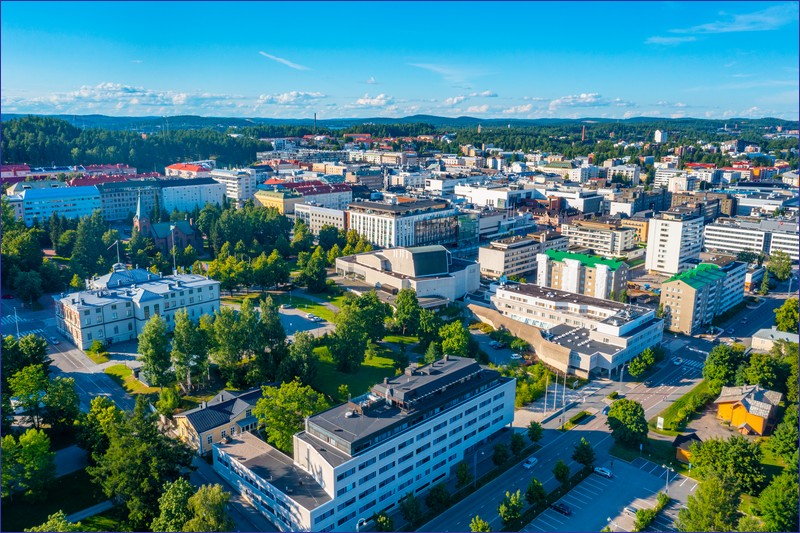Jyväskylä is a medium-sized city (about 150,000 inhabitants) located on Lake Päijänne. It was founded in 1837. It is an industrial and academic center without world-class monuments. Tourists who stay in the city for a longer time can visit several interesting museums dedicated to the history of Finland. Jyväskylä is a dynamically developing city. In 1940, there were only 8,000 inhabitants in the town. The city has very good rail and bus connections with the rest of the country.
Probably the most famous resident of Jyväskylä was the architect Alvar Aalto. Born in 1898, he established his first architectural office in the city in 1923. After completing a few small projects, he moved to Helsinki. He returned to Jyväskylä in the 1950s. During his career, he designed numerous buildings throughout Finland, in several cities in Sweden and Germany, as well as in places like Iceland and New York. He also designed furniture. In his hometown, you can visit the Alvar Aalto Museum dedicated to his work. The functionalistic Säynätsalo Town Hall is also open to visitors.
Right next to the Alvar Aalto Museum is the Museum of Central Finland (Keski-Suomen museo). The museum presents the history of the city and region in an accessible and interesting way, within the broader context of Finnish history.
The city is also home to the Craft Museum of Finland, which showcases a variety of handicraft techniques from across the country, as well as a center dedicated to textile conservation that provides services for private customers.
There are also the Natural History Museum, featuring life-sized animals, birds, fish, and insects, and the Jyväskylä Art Museum, a contemporary art museum.
The Aviation Museum of Central Finland, located near Jyväskylä Airport in Tikkakoski, presents the aviation history of Finland. The airport and museum are situated about 20 kilometers from the city.
An interesting place in the city center is the Toivola Old Courtyard, which consists of seven beautiful wooden buildings from the late nineteenth century.
Among the historic landmarks is the Jyväskylä City Church, the first stone church in Central Finland. It was built in the middle of the market square in 1880. The church is surrounded by a small park. Another noteworthy building is the Jyväskylä City Hall, designed by Karl Viktor Reinius and completed in 1899.
On the slope of the hill overlooking the city center rises the Vesilinna Observation Tower, offering views over the city center.
In the summer season, tourist ferries operate on Lake Päijänne.
Related articles:
Train travel in Finland – a comprehensive guide
